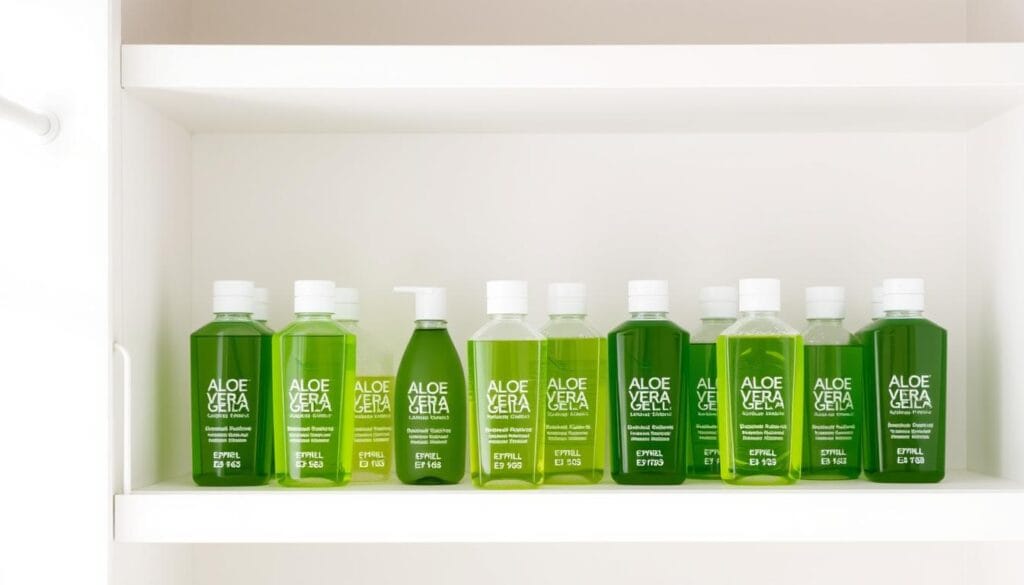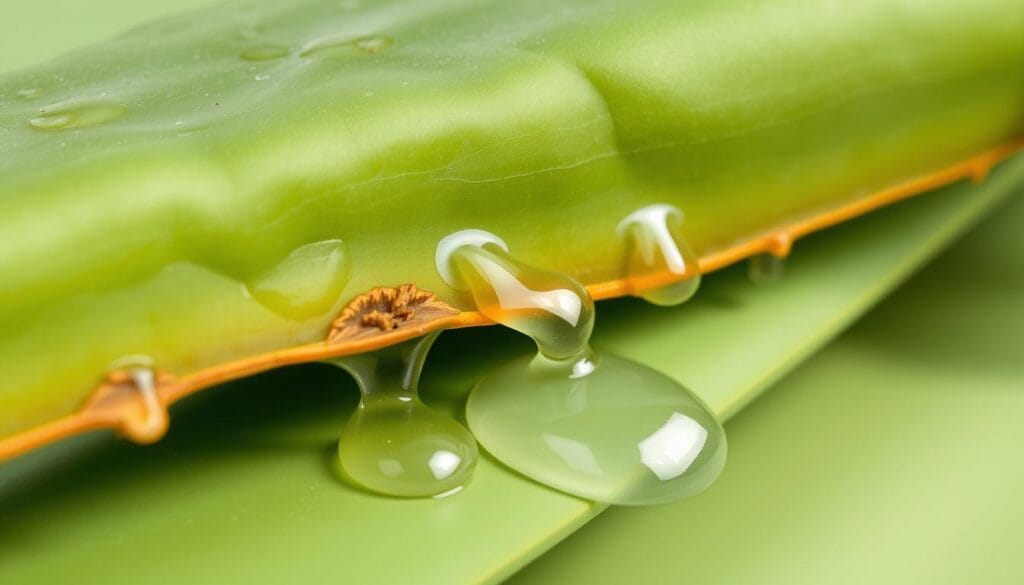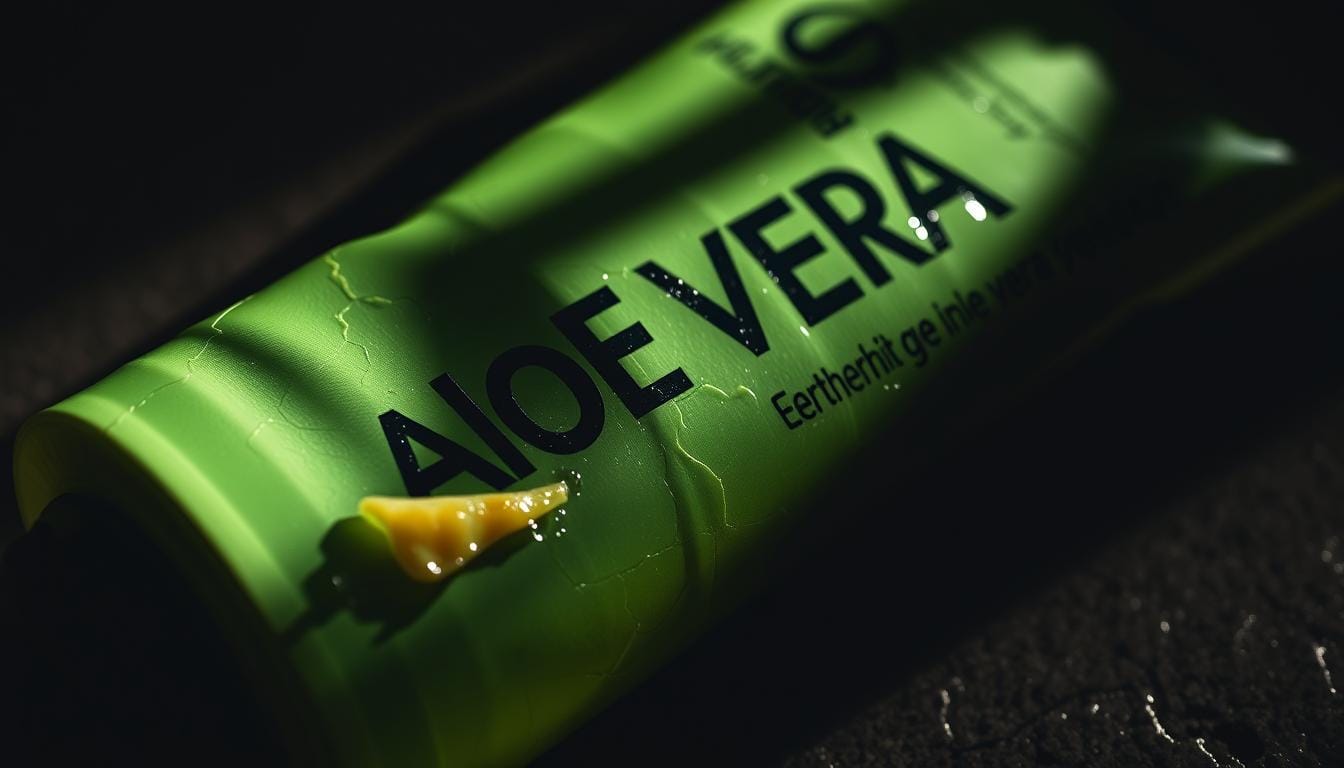Does Aloe Vera Gel Expire? Every summer, I learned the answer the hard way. After a long beach day, I reached for my aloe vera gel—only to find out it had expired. What I didn’t realize was that using expired aloe vera gel could actually irritate my skin instead of soothing it.
Understanding the shelf life of aloe vera gel is crucial. It’s not just about checking the expiration date—it’s also about avoiding bacteria and preserving its natural healing power.
Whether you’re using store-bought or homemade aloe vera gel, knowing when it goes bad helps protect your skin and maximize the benefits.
Key Takeaways
- Expired aloe vera gel can harbor harmful bacteria
- Shelf life varies between natural and commercial products
- Proper storage extends aloe vera gel’s effectiveness
- Visual and olfactory changes indicate product degradation
- Regular product inspection prevents potential skin reactions
What is the shelf life of aloe vera gel?
Aloe vera gel is a popular skincare and healing product. Its shelf life depends on several factors. These include its source, processing, and storage conditions.

It’s important to know the difference between natural and commercial aloe vera. This knowledge helps use and enjoy them better.
Natural vs. Commercial Aloe Vera Products
Natural aloe vera gel has a shorter shelf life than commercial products. Homemade aloe vera gel can last:
- 1-2 weeks when refrigerated
- Up to 1 week at room temperature
- Maximum 2-3 days without proper storage
Commercial aloe vera products have preservatives. This makes them last longer. They can stay good for:
- 12-24 months when unopened
- 3-6 months after opening
- Longer if stored correctly
Typical Expiration Timeframes
The expiration of aloe vera gel depends on its ingredients. Pure, unpreserved aloe vera gel degrades faster than processed alternatives.
“Always check the product label for specific shelf life information,” recommends skincare expert Dr. Emily Rodriguez.
Storage Impact on Longevity
Proper storage is key for both natural and commercial aloe vera products. Important storage tips include:
- Keep away from direct sunlight
- Store in cool, dry places
- Seal containers tightly after use
- Refrigerate when possible
Knowing these tips helps you get the most out of your aloe vera gel. It ensures you enjoy its benefits safely and effectively.
How do you know if aloe vera has gone bad?

It’s important to know when aloe vera gel has gone bad. This is key for keeping your skin healthy and avoiding irritation. Fresh gel looks, feels, and smells different from expired gel.
There are clear signs to tell if your aloe vera gel has expired. Look out for these:
- Discoloration from clear/light green to brown or dark green
- Visible mold growth on the surface
- Unusual separation or watery consistency
- Changes in gel transparency
The smell of spoiled aloe vera gel is another warning sign. Fresh gel has a mild, plant-like scent. But when it’s bad, you might smell:
- Sour or rancid odor
- Strong chemical-like smell
- Musty or fermented fragrance
Texture changes are also important. Watch for these signs:
| Original Texture | Expired Texture |
|---|---|
| Smooth and consistent | Lumpy or chunky |
| Light and spreadable | Thick and sticky |
Pro tip: When in doubt, always prioritize your skin’s safety and discard aloe vera gel showing multiple expiration signs.
Does Aloe Vera Gel Expire ?
Aloe vera gel is a natural product known for its healing powers. Knowing when it expires is key to keeping it effective and safe.
Natural products like aloe vera change over time. These changes affect their healing abilities. The breakdown of aloe vera’s active ingredients happens through several ways.
Chemical Changes Over Time
As aloe vera gel ages, its molecules start to change. The main changes are:
- Oxidation of beneficial compounds
- Protein degradation
- Enzymatic breakdown of active ingredients
- Reduction in antioxidant potency
Active Ingredient Degradation
The strength of aloe vera gel comes from its active ingredients. Over time, these ingredients like polysaccharides, vitamins, and minerals break down. This decline affects the gel’s healing abilities.
Impact on Therapeutic Properties
Expired aloe vera gel loses a lot of its healing power. The main areas affected are:
- Wound healing capacity
- Skin regeneration properties
- Anti-inflammatory effectiveness
- Moisture retention capabilities
Understanding these changes helps users decide when to use and store their aloe vera gel.
What happens if you use expired aloe vera gel
Expired aloe vera gel can cause skin reactions. These can range from mild irritations to serious allergic responses. It’s important to know the side effects of using expired aloe vera gel.
Expired aloe vera skin reactions show up in different ways:
- Redness and inflammation of the skin
- Intense itching or burning sensations
- Development of small rashes or bumps
- Increased skin sensitivity
Bacterial contamination is a big risk with expired aloe vera gel. As it ages, harmful bacteria can grow. This can lead to more serious skin problems.
| Skin Reaction Type | Potential Symptoms | Severity Level |
|---|---|---|
| Mild Irritation | Slight redness, minimal discomfort | Low |
| Contact Dermatitis | Intense itching, swelling, rash | Moderate |
| Allergic Response | Severe inflammation, blistering | High |
People with sensitive skin are more likely to react to expired aloe vera gel. If you notice any unusual reactions, wash the area and stop using it.
Always prioritize your skin’s health by checking the expiration date and proper storage conditions of your aloe vera gel.
Health Risks of Using Expired Aloe Products
Expired aloe vera products can be harmful. They might not work well and could hurt your skin and health. It’s important to know these risks to keep your care routine safe.
Old aloe vera products can grow harmful germs. This is because the natural preservatives break down. This makes it easy for bacteria to grow.
Bacterial Contamination Concerns
Using expired aloe vera can lead to bacterial contamination. Bacteria can grow fast, especially if the gel is not stored right. This can cause:
- Skin infections
- Potential inflammatory responses
- Increased risk of dermatological complications
Allergic Reaction Possibilities
As aloe vera ages, its makeup changes. This can cause allergic reactions. Users might see:
- Skin irritation
- Redness and swelling
- Increased sensitivity
Long-term Effects
Using expired aloe vera often can harm your health more. The broken-down compounds may:
| Potential Risk | Possible Consequence |
|---|---|
| Cellular damage | Compromised skin barrier function |
| Oxidative stress | Accelerated skin aging |
| Microbial exposure | Increased infection vulnerability |
Always check expiration dates and store aloe vera products right. This helps avoid health risks.
What is the best way to store fresh aloe vera gel?
Storing aloe vera gel right is key to keeping it fresh. The right storage can make your natural healing product last longer. It’s important to store it well to keep its healing powers and stop bacteria from growing.
Here are some tips for storing aloe vera gel:
- Keep it in a cool, dark spot away from sunlight
- Use containers that don’t let air in to stop germs
- Put opened commercial gels in the fridge
- Use glass or BPA-free plastic for homemade gel
Temperature is very important for keeping aloe vera fresh. The best storage temperature is between 50-70°F (10-21°C). Too hot or cold can damage the gel’s active ingredients, making it less effective.
For homemade aloe vera gel, you can also use:
- Add natural preservatives like vitamin E or grapefruit seed extract
- Use clean, sterilized tools when making it
- Make small batches to lower the risk of contamination
Don’t store aloe vera gel near heat or in humid places. These spots can make bacteria grow faster and harm the gel’s quality. By following these tips, you can keep your aloe vera gel potent and safe.
What is a good substitute for aloe vera gel?
Don’t worry if your aloe vera gel has expired. There are many natural and commercial options that work just as well. They offer the same healing and moisturizing benefits.
Looking for natural substitutes can be a game-changer for your skin. These alternatives have amazing properties that are similar to aloe vera:
- Cucumber juice: It cools and hydrates your skin like aloe vera does
- Witch hazel: It has anti-inflammatory properties for healing your skin
- Chamomile extract: It calms irritated skin and reduces redness
- Coconut oil: It gives your skin deep moisture and natural healing
Commercial Alternatives for Skincare
For easy alternatives, many commercial products can replace your expired gel:
- Calendula-based creams
- Panthenol (Vitamin B5) moisturizers
- Hyaluronic acid serums
- Green tea-infused skincare products
“Nature provides abundant alternatives to traditional skincare ingredients.” – Dermatology Research Institute
It’s important to find alternatives that fit your skin’s needs. Whether you go for natural or commercial options, choose products that hydrate and heal your skin.
How do you know if aloe vera gel has gone bad?
It’s important to know when to throw away aloe vera gel. This keeps your skincare safe and effective. Using old gel can cause skin problems and reduce its benefits.
Here are signs it’s time to get rid of your aloe vera gel:
- Unusual color changes or discoloration
- Separation of ingredients or liquid pooling
- Unpleasant or rancid smell
- Visible mold growth
- Texture becomes watery or lumpy
Following aloe vera expiration guidelines keeps your skin safe from bacteria. Most aloe vera gels last 1-2 years if not opened. But once opened, use it within 6-12 months.
Always check the expiration date on the product. Store it in a cool, dark place to keep it fresh. Refrigeration can help, but it won’t stop all degradation.
Pro tip: Mark the date of opening on the container to track its usable period accurately.
Don’t risk your skin by using expired aloe vera gel. If unsure, get rid of it and buy a new one for the best skincare.
Conclusion
Knowing about aloe vera gel safety is key for good skincare. It’s important to follow expired aloe vera precautions to protect your skin. Always check if your product is fresh and stored right to get the best results.
Always check your aloe vera gel before using it. Look for any color, smell, or texture changes. Storing it in a cool, dark place can make it last longer. If unsure, it’s best to get a new one to avoid skin problems or germs.
Skincare experts say to buy aloe vera gel in small amounts. This helps avoid waste and keeps it fresh longer. Being informed and careful can help you use this natural product safely and effectively.
Your skin needs the best care. Paying attention to aloe vera gel safety is crucial. Checking expiration dates, storage, and product condition can prevent skin issues. A little care can make a big difference in keeping your skin healthy and safe.
